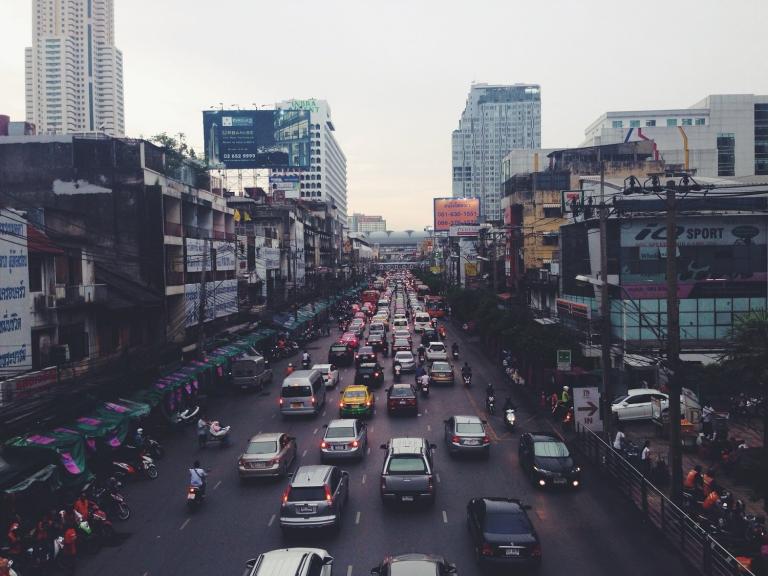Want to improve traffic congestion? Don't just build new roads

Traffic. It's an unfortunate fact of life. A consequence of growing economies and the increasing evolution of urbanization. By 2050, it's estimated that 70% of the world's population will live in urban areas. If we think the roads are congested now, we haven't seen anything yet.
According to the Victoria Transport Policy Institute, US drivers lose over $100 billion in economic value to traffic congestion.
The solution, you might argue, is to build more roads to tackle this increasing urban density problem. But with the cost of building a mile of urban road standing at $11 million, it's a costly exercise that has the potential to wipe out city budgets in one fell swoop. What can small or medium sized cities do?
There is, however, a way to reduce the traffic congestion problem within the confines of the existing infrastructure. The solution? Location technology. We caught up with Pratik Desai from HERE Technologies at the 2020 CES Show in Las Vegas to see how software can help cities move more freely.

How does location technology help solve the issue of traffic management?
“Using location software, we can help diagnose a city and break down its mobility patterns. Traffic varies not only by when it occurs but where and how. After a series of complex modelling exercises, we offer an array of innovative, data-driven solutions that match not only the type of congestion that's occurring but also what sector of the city it's occurring in. The key is to be comprehensive; take advantage of network effects. Because software is at the core, the solutions are adaptable over time. The fact that using software is cheaper than building new roadways is really just a secondary benefit."
What are some of these innovative solutions?
“We've identified five congestion management measures to alleviate traffic congestion, and each one is tailored to a different kind of city sector: BRT (bus rapid transit) lanes in city centers, roundabouts just outside city centers, park and rides at the edges of a city, dynamic tolling at highway exit ramps into a city, and vehicle-based lane segregation for highways that eventually lead into cities. Using a comprehensive approach that includes all five is an effective way to harmonize traffic throughout a city's existing infrastructure."

Implementing just one congestion management solution isn't likely to make a measurable impact in isolation. But implementing an array of smart city solutions can be the key to making a city that is growing still liveable.
What kind of insights does location software give you?
“Location data enables us to help urban planners to determine where its appropriate to build in a city. High quality data is key here. For example, it would not make sense to have a Bus Rapid Transit (BRT) system on the outskirts of the city. There's not enough density there, and the traffic congestion is not likely to be caused by a space constraint alone. It's better suited for sectors of the city where the flow of movement is still inward, not outwards out of the city. The same principle applies to vehicle-based lane segregation. This is tailor made for a multi-lane highway leading into a city where you have the scale of multiple miles of roadway, not just a short city road. A park and ride system works really well on the edge of the city, moving into it. People can drive from the suburbs to a strategically located city park and ride that's connected to existing transit infrastructure to complete the rest of their journey."
So location data helps cities better plan their infrastructure?
“Absolutely. Where do you build public transport infrastructure? How do you know what type of congestion is occurring? How does it change based on time? What are the mobility patterns? This is where software comes into play because using HERE Traffic, we can see what the nature of the congestion is in real time. Is it a volume issue, a space issue or a coordination issue? These are the things our software can uncover. Software allows you to solve congestion issues intelligently."
Why is this better than building new roads?
“The issue is that the road infrastructure is not keeping up with the growth in urban populations. Studies have shown that a 1% increase in roadway capacity is followed by a 1% increase in roadway demand over the intermediate term. What this means is that every time you build a new road, extra demand is going to occupy it. It doesn't solve the existing problem of congestion. The crux of our solution is that we enable greater coordination within the existing infrastructure. This is the foundation of any smart city."
Find out more about HERE Traffic, our innovative traffic management solution to enable real-time planning of traffic and congestion – and our innovative solutions for public sector infrastructure.
Have your say
Sign up for our newsletter
Why sign up:
- Latest offers and discounts
- Tailored content delivered weekly
- Exclusive events
- One click to unsubscribe